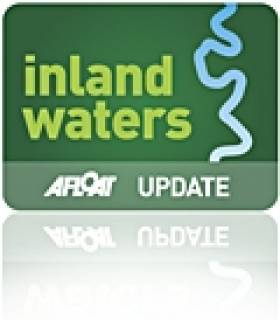Displaying items by tag: Naas Canal Festival
Naas Prepares for Canal Festival at Sallins Harbour
The inland waterways of County Kildare will be buzzing with boats this coming October Bank Holiday weekend. The Inland Waterways Association of Ireland (IWAI) Kildare will host it’s now annual Naas Canal Festival from Friday October 23rd to Monday 26th. A large fleet of boats is expected to assemble in Sallins harbour on Friday followed by a parade along the Grand Canal, up through the flight of five locks into Naas harbour.
The parade will leave Sallins at 11am and all boats should be in Naas harbour by 5pm. In the spirit of the founders of the IWAI, who established the Association in 1954 to campaign against the installation of fixed span bridges across the River Shannon, IWAI Kildare will use the Naas Canal Festival to showcase the leisure potential of the Grand Canal in this area. Whether your passion involves travelling through locks by boat, paddling a canoe, walking or cycling for health, well being and enjoyment or waiting patiently for a bite on your fishing line, IWAI Kildare invites you to immerse yourself in the amazing engineering achievement that is the Grand Canal.
IWAI Kildare is actively campaigning to re open the Corbally branch of the Grand Canal from Naas harbour to Corbally harbour. This stretch of waterway is in good condition but passage for boats is blocked by a number of culverted crossings, including the road from Naas to Newhall which crosses the canal near Jigginstown.
More information here or contact Niall O Dowda PRO on 086 361 3159
Naas Canal Festival Includes 'Best Lit' Boat Competition
Friday Oct 22nd
Arrival of boats in Naas harbour
Saturday Oct 23rd
12:00 – 18:00 IWAI Trailer
12:00 - 14:00 Registration in the Canal Stores
14:00 – RNLI Display and Safety Check
19:00 Coordinated switch on of Boat Lights
19:00 BBQ in the Canal Stores
19:00 - 22:00 Best Lit Boat Competition
Saturday & Sunday all day activities
Raffle for a Weekend for 4 people on a luxury Shannon Cruiser
Best Dressed Boat Competition
Children's activities – register on Sat at 12:00 in Canal Stores
Art/Craft Competition – for Children 12 and under – register on Sat at Canal Stores
Sunday Oct 24th
11:00 – 17:00 Canal Boat Festival – Boats and their history will be on display externally
11:00 – 17:00 Canal Boat 107B – Canal display available for viewing internally
10:00 Small Boat Rally up the Corbally Line 19:00 Entertainment in the Townhouse – Judging & Prize Giving
Monday Oct 25th
11:00 Walk & Talk with the Naas Historical Society





























































